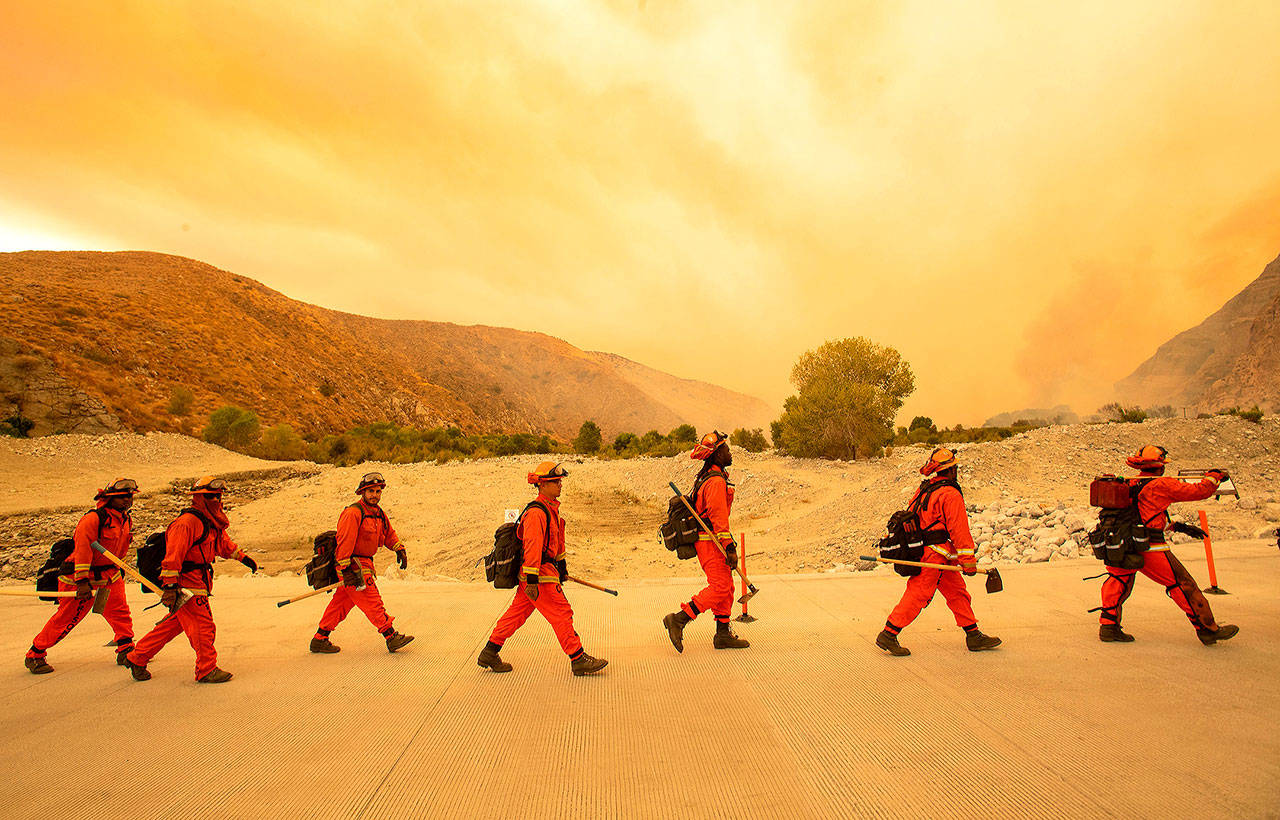SACRAMENTO, Calif. — State prisoners are providing a key source of labor on the out-of-control Creek Fire in Fresno and Madera counties, as well as dozens of other fires around the state.
Inmate “hand crews” have for decades been used to fight California’s wildfires, but, lately, they’ve become controversial as the nation debates criminal justice reforms. Some critics call them a form of slave labor since the inmates earn just dollars a day doing the dangerous work.
Supporters of the state prison system’s “conservation camp” program, however, argue that the inmates are learning valuable life and job skills on the fireline, and many inmates would rather be working off their sentences outdoors and helping communities, instead of being locked in a cell. The inmates also earn time off their sentences.
Here’s how the debate breaks down, and how the inmates are being deployed right now.
There are currently four inmate crews fighting the 143,000-acre Creek Fire, according to the California Department of Corrections and Rehabilitation. The crews are from Miramonte and Mountain Home conservation camps, based around the Sequoia National Forest. At least one crew from Gabilan Conservation Camp on the Central Coast also is assigned to the fire.
There are 43 inmate conservation camps up and down the state.
As of Tuesday, 100 inmate crews, made up of 1,219 incarcerated firefighters, were deployed to fires around the state.
Each crew is typically comprised of up to 17 inmates overseen by a captain from the California Department of Forestry and Fire Protection.
Identified by their red-orange fire gear, inmates use chainsaws and tools to cut firelines, and they help mop up after a fire is contained.
When fires aren’t burning, they are assigned forest restoration work, they fill sandbags at floods and they clean up along highways, among other duties.
The number of inmates eligible to work at the camps has been steadily decreasing in recent years.
Only people with less serious felony offenses are allowed to participate in the program, where they’re paid a small wage —between $2 and $5 a day, plus $1 per hour when they’re on a fire.
But, for much of the last decade, state officials have been trying to reduce the size of the prison population by first diverting lower-level offenders to county custody or releasing them outright.
As a result, fewer inmates qualify for the program. The CDCR has enough room in its camps for 4,234 inmates, but as of last summer, there were only 2,800 on the crews.
This summer, the inmate fire camp population is even smaller because of COVID-19.
Gov. Gavin Newsom has been steadily shrinking the size of the prison population to reduce the spread of the disease inside the state’s prisons.
The majority of releases were of people whose terms were already ending, though the state also expedited the release of inmates who were near the end of their sentence. The prison system also suspended intake from county jails, contributing to the decreased number of people held by the state.
That’s lead to even fewer inmates inside the fire camps. As of last week, there were only 1,969 inmates based out of the fire camps, 831 fewer than last year.
Fire officials acknowledge the lack of inmate labor creates a labor shortage, so they’ve requested hand crew teams from out of state to help pick up the slack.
For some activists, it’s appalling that inmates are being used for the dangerous work at all. They say it’s especially galling that many inmate firefighters can’t land a firefighting job when they’re released because they’re dogged by their criminal records.
They’ve demanded a change in the rules to make it easier to get on a fire department after they’ve earned their freedom.
Firefighters at many agencies earn six-figure salaries and have excellent benefits.
A bill this year, AB 2147 by Assemblywoman Eloise Gomez Reyes, D-San Bernardino, would allow inmate firefighters to have an easier path at having their records expunged. The bill has passed the legislature and is awaiting Newsom’s signature or veto.
Gomez Reyes said she’s heard the complaints that inmates are being used as slaves, but that’s not how the inmates she’s talked to view the program.
“In my conversations with inmate firefighters, at the bottom of their list is how much they’re paid,” she told The Sacramento Bee this summer. “That’s of less concern to them than the skills they’re going to receive and the opportunities that they wish they could get because of those job skills.”


